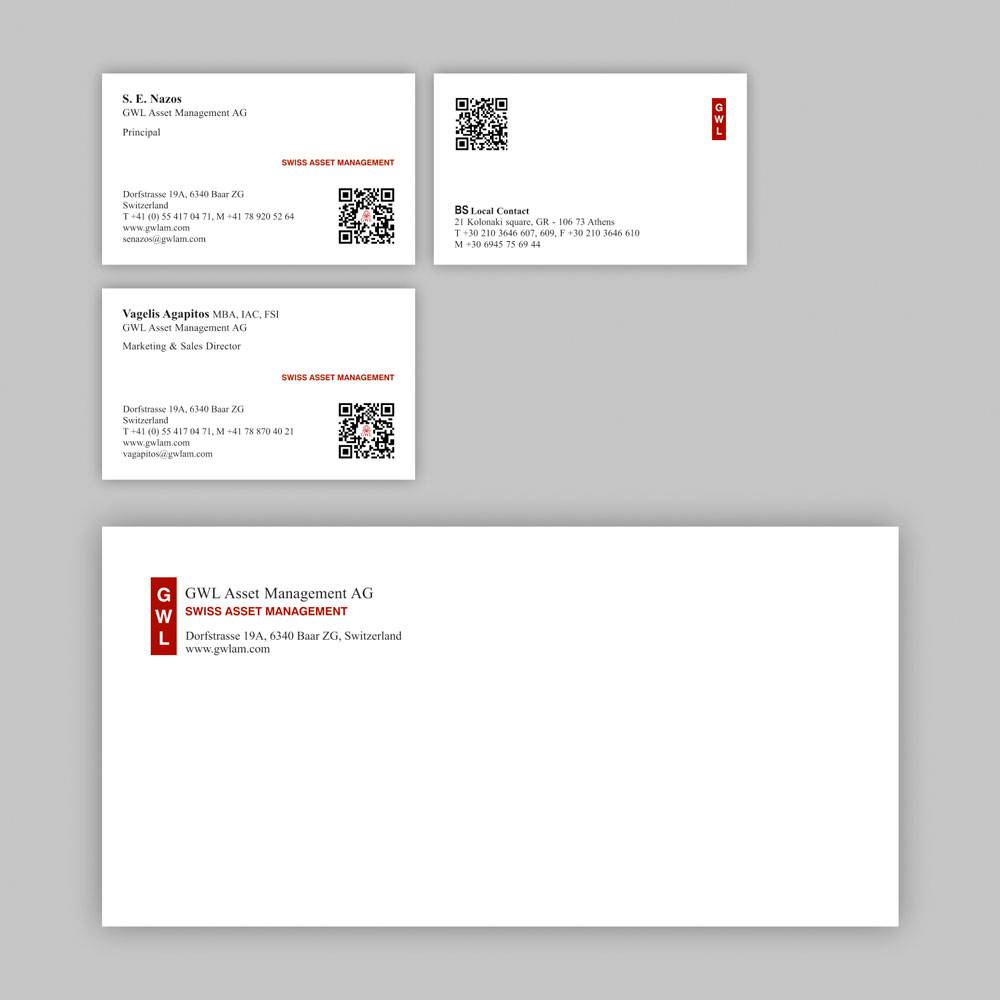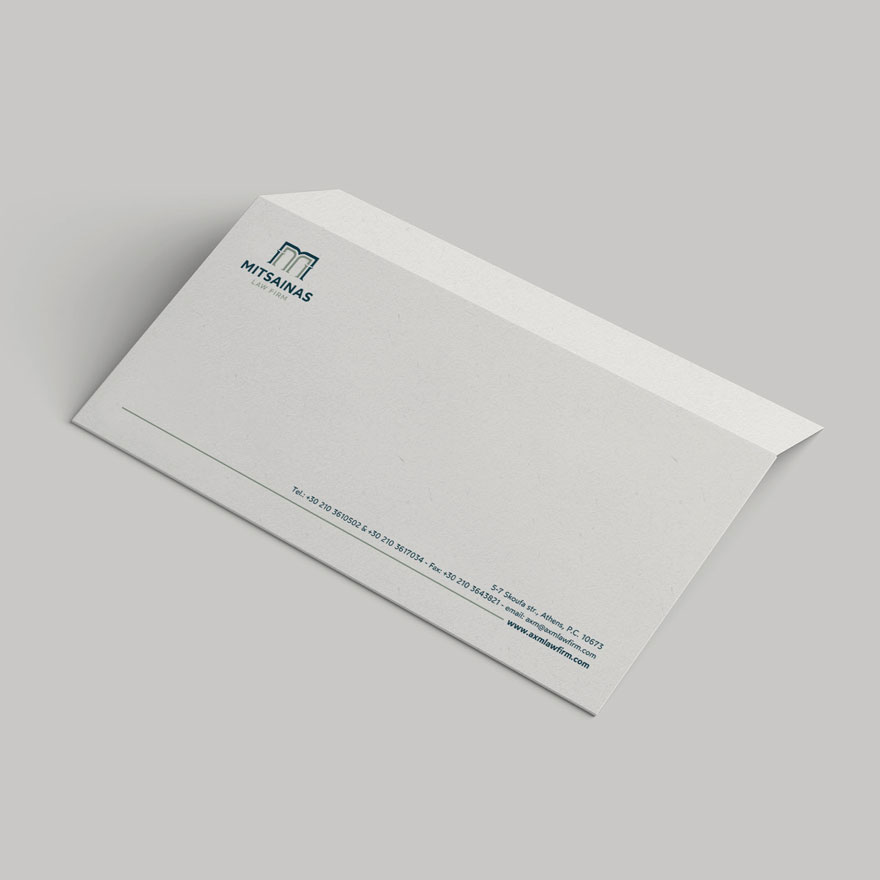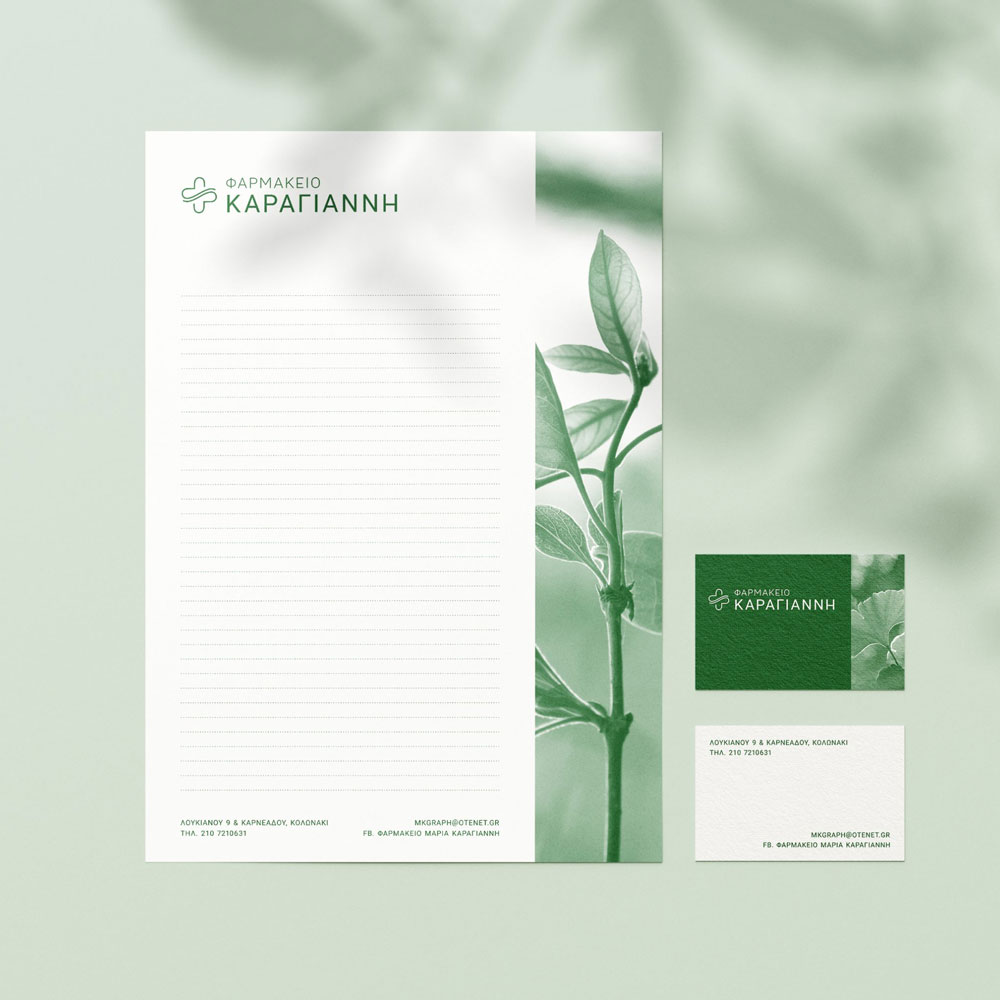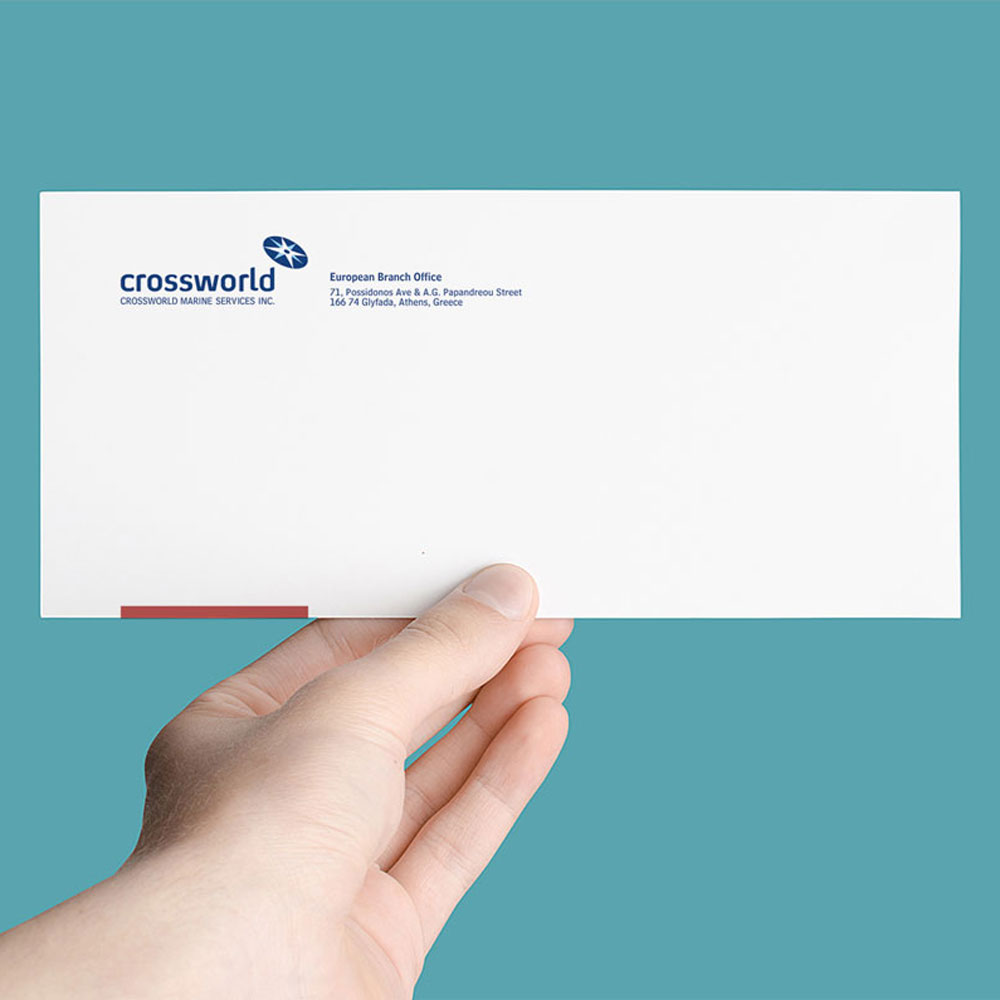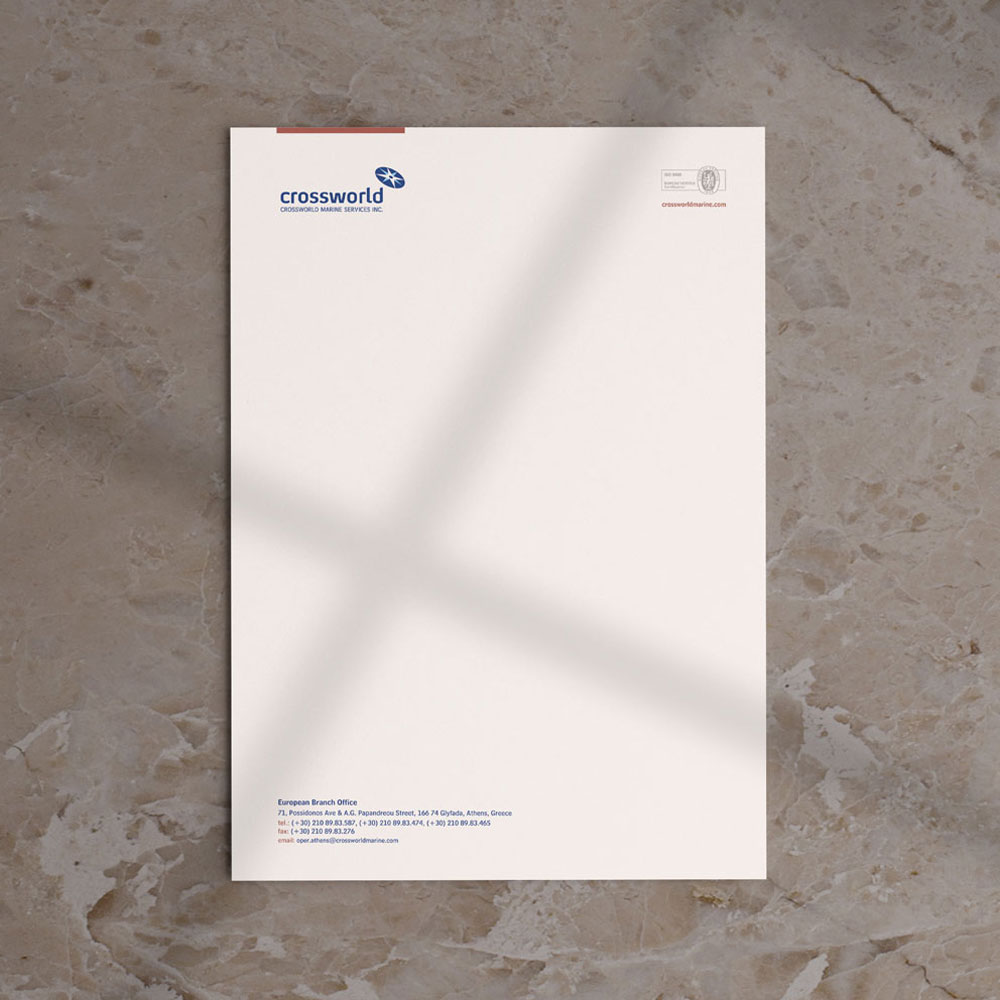Corporate identity
Planning Corporate Identity
The creation corporate identity is the process of building a visual profile for a company's brand and principles. This includes everything from creation of logos and slogans, to the choice of colors and fonts, and is a critical factor in developing a dynamic and cohesive corporate image. Through the development of an overall unified corporate image, the company manages to secure its position in the market, highlight its values and stand out in a unique and recognizable way from the competition.
A well-designed corporate identity can help a company become more recognizable and build trust with its customers. The process of creating a corporate identity begins with a company's mission statement, which describes the organization's core values and purpose. From there, a designer will develop an overall look and feel for the brand, which includes elements such as color, font, and logo.
The choice of colors for the corporate identity plays a critical role in creating a sense of unity and consistency within the brand. For example, banks often choose the colors blue and green to promote feelings of trust and security. Conversely, a new technology company might prefer bolder and brighter colors to reinforce the image of innovation it wants to project.
SELECTION SERIES
The choice of font in the corporate identity plays an important role, as it must be clear and reflect the image that the brand wants to project. For example, a law firm might choose a classic serif font to express its professionalism, while an online retailer might use a more modern sans-serif font to show its innovation. The logo, as one of the central elements of the corporate identity, must be simple, memorable and maintain its recognizability regardless of size or shape.
By forming a homogeneous corporate identity, a business enhances the ability of its brand to stand out and become easily recognizable in the market. With a well-organized visual presence, it can consistently promote its message and create an impressive and long-lasting memory of its brand.
Corporate Identity Design – Samples
BASIC DATA
Logo design and its role in corporate identity
A logo is the central element of a company's corporate identity. It is the visual symbol that encapsulates the essence of the brand. A successful logo design should be simple, memorable and flexible. It should reflect the company's values, evoke the desired emotions and resonate with the target audience. A well-designed logo has the power to leave a lasting impression and become synonymous with the brand itself.
When designing a logo, it is important to consider factors such as scalability, adaptability and industry relevance. The logo should be easily recognizable across a variety of media and sizes, from digital platforms to physical signage. It should also adapt to different color combinations and backgrounds without losing its impact. By investing time and effort into creating a unique and eye-catching logo, a company can create a strong visual identity that sets it apart from the competition.
Typography and color palette in corporate identity design
Typography and color palette are key elements of corporate identity design that contribute to overall visual appeal and brand recognition. The choice of fonts and colors should align with the brand's personality and target audience. Typography must be legible and consistent across all branding materials, including websites, marketing collateral and packaging. It should effectively convey the tone and message of the brand.
Likewise, the color palette should be carefully chosen to evoke the desired emotions and reflect the brand's values. Different colors have different psychological effects and understanding color theory can help create a harmonious and striking visual identity. Consistency in typography and color usage across all brand elements helps strengthen brand recognition and foster a sense of trust and familiarity among customers.
Consistency and coherence across all brand elements
Consistency and coherence are vital in corporate identity design to ensure a unified and cohesive brand image. All brand elements, including logo, typography, color palette, imagery and tone of voice, should work seamlessly together to create a consistent brand experience. Consistency builds trust and credibility as it reinforces the brand's commitment to its values and promises.
To achieve consistency, it is important to establish brand guidelines that provide clear instructions on how to use and apply all brand elements. These guidelines should cover aspects such as logo placement, use of typography, color variations and tone of voice guidelines. By following these guidelines across all brand touchpoints, a company can create a cohesive and recognizable brand identity that resonates with its target audience.
Integration of values of branding and messaging in the corporate identity
A successful corporate identity should accurately reflect the brand's values, culture and messaging. It should communicate what the company stands for and what sets it apart from its competitors. By incorporating brand values and messaging into corporate identity design, a company can create an emotional connection with its target audience and strengthen brand loyalty.
Corporate identity design must visually convey the brand's mission, vision and core values. It should align with the brand messages and evoke the desired emotions in the target audience. Whether it's the use of imagery, color psychology or typography, every element should work together to tell a cohesive and compelling brand story. By incorporating brand values and messaging into corporate identity, a company can create a strong and authentic brand image that resonates with its customers.
They said about us...
Interest Form
FAQ Corporate Identity Design
Why is Corporate Identity Design important for my business?
Corporate identity design is vital for any business because it helps create a strong and recognizable brand image that sets your company apart from competitors. It includes elements such as logos, typography, color schemes and an overall visual aesthetic that is consistent across all marketing materials and touchpoints.
One of the main reasons why corporate identity design is important is that it helps create a sense of professionalism and credibility. When potential customers or clients see a well-designed and cohesive corporate identity, it gives them confidence in your business and its offerings. It shows that you pay attention to detail and that you take your brand seriously, which can go a long way in building trust and attracting new customers.
Additionally, a strong corporate identity design helps with brand recognition and recall. When your brand identity is consistent across all marketing channels, it becomes easily recognizable by your target audience. This recognition can lead to increased brand recall, making it more likely that customers will think of your business when they need your products or services.
Additionally, corporate identity design helps create a sense of unity and consistency across various marketing materials and platforms. When all your marketing materials, from your website to social media profiles and business cards, follow the same visual guidelines, a cohesive and harmonious brand experience is created for your audience. This consistency helps build brand loyalty and reinforcement.
What does Corporate Identity Design include?
Corporate identity design refers to the visual representation of a company's brand and how it is perceived by the public. It includes various elements that work together to create a coherent and recognizable image for the company. Here are some key elements that go into corporate identity design:
-
Logo Design: Logo is the most basic element of corporate identity design. It is a unique symbol or mark that represents the company and is used consistently in all marketing materials. A well-designed logo should be simple, memorable and reflect the company's values and personality. For example, Nike's swoosh and Apple's bitten apple are iconic logos that are instantly recognizable.
-
Color palette: A carefully chosen color palette is vital in corporate identity design. Colors can evoke emotions and convey the brand's message. For example, red can indicate energy and passion, while blue can convey trust and reliability. A consistent color palette ensures that all brand materials, including the logo, website and ads, maintain a unified look and feel.
-
Typography: The choice of fonts plays an important role in corporate identity design. Different fonts have distinct personalities and can convey specific messages. For example, a tech company might use a clean and modern font, while a luxury brand might choose an elegant and sophisticated font. Consistency in typography contributes to brand recognition and creates a professional image.
-
Brand Guidelines: Brand guidelines serve as a rulebook for maintaining consistency in visuals and messaging. They describe the specifications for the use of the logo, color palettes, typography and other elements of the brand. Brand guidelines ensure that all marketing materials, both online and offline, adhere to the brand identity and maintain a cohesive look. They also provide guidelines for employees and external organizations to follow when creating brand-related content.
-
Stationery design: Corporate identity design extends to stationery items such as business cards, letterhead, envelopes and email signatures. These elements embody the brand's visual identity and help create a professional and cohesive image across various communication channels.
-
Marketing materials: Collateral marketing includes brochures, flyers, banners, and other promotional materials. These materials must embody the brand's visual identity and effectively communicate the company's message. Consistency in design elements ensures that the brand is easily recognizable and enhances brand recall.
How can Corporate Identity Design help create a brand image?
Corporate identity design plays a key role in creating a company's image. It includes the visual and branding elements that represent the company's identity and differentiate it from its competitors. By leveraging various design elements such as logos, color schemes, typography and visual style, a company can create a distinct and recognizable brand image.
First of all, a well-designed logo is essential for corporate identity design. The logo serves as the face of the brand and is often the first point of contact for customers. It should effectively communicate the company's values, mission and personality. A memorable and visually appealing logo can leave a lasting impression on customers, helping them associate it with the company and its products or services.
Consistency is key in corporate identity design. All visual elements, including the logo, color palette, typography and graphic style, must be consistent across all marketing materials and touchpoints. This consistency helps strengthen brand identity and creates a cohesive and professional image for the company. For example, if a company uses a specific color scheme in its logo, it should be applied consistently across its website, packaging, advertising and social media posts.
Corporate identity design also involves creating a comprehensive set of brand guidelines. These guidelines describe how the brand should be visually represented and provide guidance on the proper use of the logo, colors, fonts and other design elements. By following these guidelines, both internal teams and external stakeholders can ensure consistency in communication and marketing efforts, further enhancing brand image.
Beyond the visual aspects, corporate identity design extends to other brand touchpoints, such as the company's website, packaging, stationery and accompanying marketing materials. These elements should reflect the brand's visual identity and be designed in a way that resonates with the target audience. For example, a luxury brand may focus on sleek and sophisticated design elements, while a technology company may emphasize modern and innovative visual elements.
A strong corporate identity design can help create a brand image that is memorable, recognizable and relatable to the target audience. It establishes a distinct presence in the market, creates trust and credibility among customers and differentiates the company from competitors. By investing in professional corporate identity design, businesses can effectively communicate their values, attract customers and foster long-term brand loyalty.
What is the role of a graphic designer in Corporate Identity Design?
The role of the graphic designer in corporate identity design is vital to creating a strong and recognizable image of a company's brand. The graphic designer is responsible for creating visual elements that represent the company's values, mission and personality. They play a vital role in shaping how the company is perceived by target audiences and stakeholders.
One of the primary responsibilities of a graphic designer in corporate identity design is to design a logo that embodies the essence of the company. The logo is the visual representation of the brand and is present in all marketing materials, products and digital platforms. It should be easily recognizable, memorable and unique. The graphic designer uses his artistic skills and knowledge of design principles to create a logo that reflects the company's identity.
Additionally, the graphic designer is involved in creating a consistent visual language for the company. This includes choosing colors, typography and other design elements that are used consistently across all communication channels. Consistency is key in corporate identity design as it helps build brand awareness and trust. The graphic designer ensures that all marketing materials such as brochures, websites and social media posts are visually cohesive and aligned with the company's brand guidelines.
Additionally, the graphic designer may be involved in the design of other brand collateral such as business cards, letterhead, packaging and signage. These materials contribute to the overall brand experience and help create a cohesive and professional image for the company.
To understand the role of a graphic designer in corporate identity design, let's consider an example. Imagine a new tech startup that wants to build a strong brand identity. The graphic designer will work closely with the founders of the company to understand their vision and values. Based on these, the designer would create a logo that would represent the innovative and pioneering nature of the company. He would choose a modern color and typography combination that reflects the progressive approach of the start-up.
Once the logo is finalized, the graphic designer will design the company's website, ensuring the visuals are consistent with the logo and brand guidelines. He would also design other marketing materials such as business cards and brochures that convey a professional and cohesive brand image.
Last Updated on April 28, 2024 by Manolis Maragkoudakis

